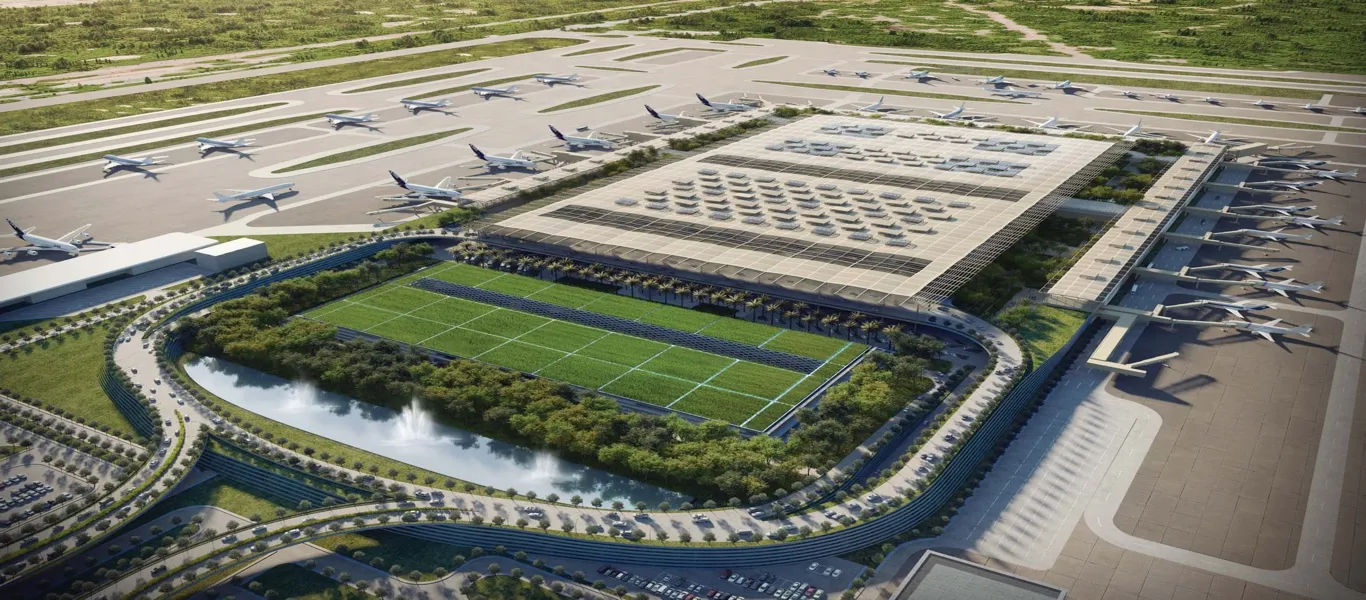Kempegowda International Airport Bangalore
Overview:
Kempegowda International Airport (IATA: BLR), operated by Bangalore International Airport Ltd (BIAL), serves as the principal aviation gateway to Bangalore (Bengaluru), Karnataka. Since commencing operations in May 2008, BLR has grown into India’s third‑busiest airport (after Delhi and Mumbai) and one of Asia’s top 30 busiest in passenger volumes. In FY 2024‑25 it handled over 41.88 million passengers and 502,480 metric tonnes (MT) of cargo—a milestone first. This reflects 11.6% growth over FY 2023‑24, with 36.05 M domestic and 5.83 M international passengers, while cargo volume rose by about 14% year on yearWhy Choose Bangalore Airport?
- World-Class Terminals: Featuring two state-of-the-art terminals (T1 & T2), BLR handles over 30 million passengers annually. Terminal 2, also known as the “Garden Terminal,” blends sustainability with modern design, offering a lush green ambiance inspired by Karnataka’s rich biodiversity.
- Global & Domestic Connectivity: Serving 80+ destinations worldwide with 40+ airlines, BLR connects Bangalore to major cities across Asia, Europe, the Middle East, and the Americas. Domestically, it links to every key city across India with high flight frequency.
- Effortless Travel: From smart check-in kiosks and biometric boarding to real-time flight updates, the airport is built for smooth, efficient travel.
History & Development
- Genesis & Early Phase (2008–2015): The airport was built to alleviate capacity constraints at HAL Airport. The first commercial operations began in May 2008, after a test flight on Mar 7, 2008, which was piloted by Deccan’s Captain Pratap Deshpande and carried media personnel aboard an Airbus A320
- Parallel Runways & Growth (2019 onwards): In December 2019 the second runway (CAT IIIB-equipped) was commissioned, allowing simultaneous operations for arrivals and departures—a first in South India. This dramatically increased capacity and improved operational flexibility.
- Terminal 2: “Garden Terminal” (2022–2023): Inaugurated by Prime Minister Narendra Modi on 11 November 2022, Terminal 2 became fully operational in January 2023 and by September 2023 all international flights had shifted from Terminal 1 to T2.
Terminal Infrastructure
- Terminal 1 (T1): Covers ~150,556 sqm, designed to handle ~20 million passengers annually. Used for both domestic and international operations until T2 came online. Post‑Sept 2023, primarily domestic operations for carriers like IndiGo, SpiceJet, Akasa, Alliance Air
- Terminal 2 (T2): Known as the "Garden Terminal" due to extensive green spaces—over 600,000 plants across 620 endemic species, bamboo structures and internal waterfalls—within a biophilic design theme. Features 90 check‑in counters and 19 boarding gates serving domestic and international traffic. A 1.5 km walkway plus shuttle connects it to T1
Passenger Experience & Facilities
- Services & Amenities: Smart & Seamless Travel: Features include DigiYatra biometric boarding, smart check‑in kiosks, automated baggage handling, CTX scanners that allow gadgets in hand luggage without plastic trays (pilot at T2)
- Accessibility Initiatives: The Sunflower Airport: BLR is India’s first "Sunflower Airport": discreet lanyards and badges signal hidden disabilities, with staff trained in sign language, Braille menu cards, accessible washrooms and help for passengers with reduced mobility
- Cultural Integration: T2 hosts 60 artworks by 43 Indian artists exploring the nine emotions (Nāṭarāṣa), including Bidri, wood puppets, copper sculptures—turning transit space into an art gallery
Connectivity – Ground Access & Public Transport
- Road & Bus: BLR is about 40 km from Bangalore's central business districts. Access via private car, taxis and ride‑share, as well as BMTC’s Vayu Vajra AC Volvo bus service connecting key city hubs to the airport
- Metro Rail: The upcoming Blue Line (ORR East-Airport Metro) will connect the airport to Central Silk Board through Hebbal, expected to open between June–September 2026 (Phase 2B); full operational completion by late 2026 connecting via KR Puram, Nagawara interchanges
- Parking & EV Strategy: Extensive on-site parking and drop‑off zones with app‑based cab coordination. June 2025 saw the launch of Karnataka's first solar‑integrated EV charging station near BLR Airport, powered by second‑life batteries, operating 24×7, supporting sustainable ground transport
Cargo & Economic Role
- Cargo Infrastructure: BLR has a dedicated cargo village with three cargo terminals, handling perishables, pharmaceuticals, garments, electronics and industrial goods
- Growth & Leadership: In FY 2024‑25, total cargo throughput reached a record 502,480 MT, with 321,418 MT international cargo (+21%) and 181,062 MT domestic (+4%)
- Future Enhancements: BIAL is investing over ₹17,000 crores over the next five years to expand airside, terminal, cargo and landside capacity—expected to include a western cross‑field taxiway to connect runways for Code‑F aircraft operations, with civil works slated from early 2025
Sustainability & Environmental Stewardship
- Solar Power & Energy: BLR is India’s first fully solar‑powered airport. It features a 3.35 MW rooftop solar plant and a 53‑acre solar farm at the airfield supplying electricity to terminals and operations
- Water Management: Rainwater harvesting systems capture rooftop runoff (total capacity ~1,700 kilolitres) reused for HVAC and landscaping, with surplus recharge to local waterbodies—making BLR region “water positive”
- Biodiversity & Biophilia: Terminal 2 incorporates six ecological habitats, 620 endemic plant species, large bamboo installations, and living walls to improve air quality, reduce energy usage, and celebrate Karnataka flora
- Carbon Accreditation:cBLR Airport is the first in Asia to receive ACI Level 5 accreditation for carbon emissions management and sustainability practices
Future Expansion & Vision
- Terminal Expansion: T2 Phase II will raise capacity from 25 M to ~45 M passengers annually with additional gates, lounges and retail zones
- Airside Enhancements: Construction of a western cross‑field taxiway (1.4 km) to connect parallel runways; supports Code‑F aircraft and enhances scheduling flexibility. Work expected to begin in early 2025
- Multimodal Connectivity: Blue Line metro link to airport (2026), Sampige suburban rail branch (2029), road‑based enhancements, EV infrastructure and last‑mile options to integrate the airport seamlessly with Bangalore's transport network
- Passenger & Cargo Forecasts: Aimed 45–50 M passenger traffic by end of decade, backed by expansions and new international routes (e.g. Hanoi launched May 2025)
